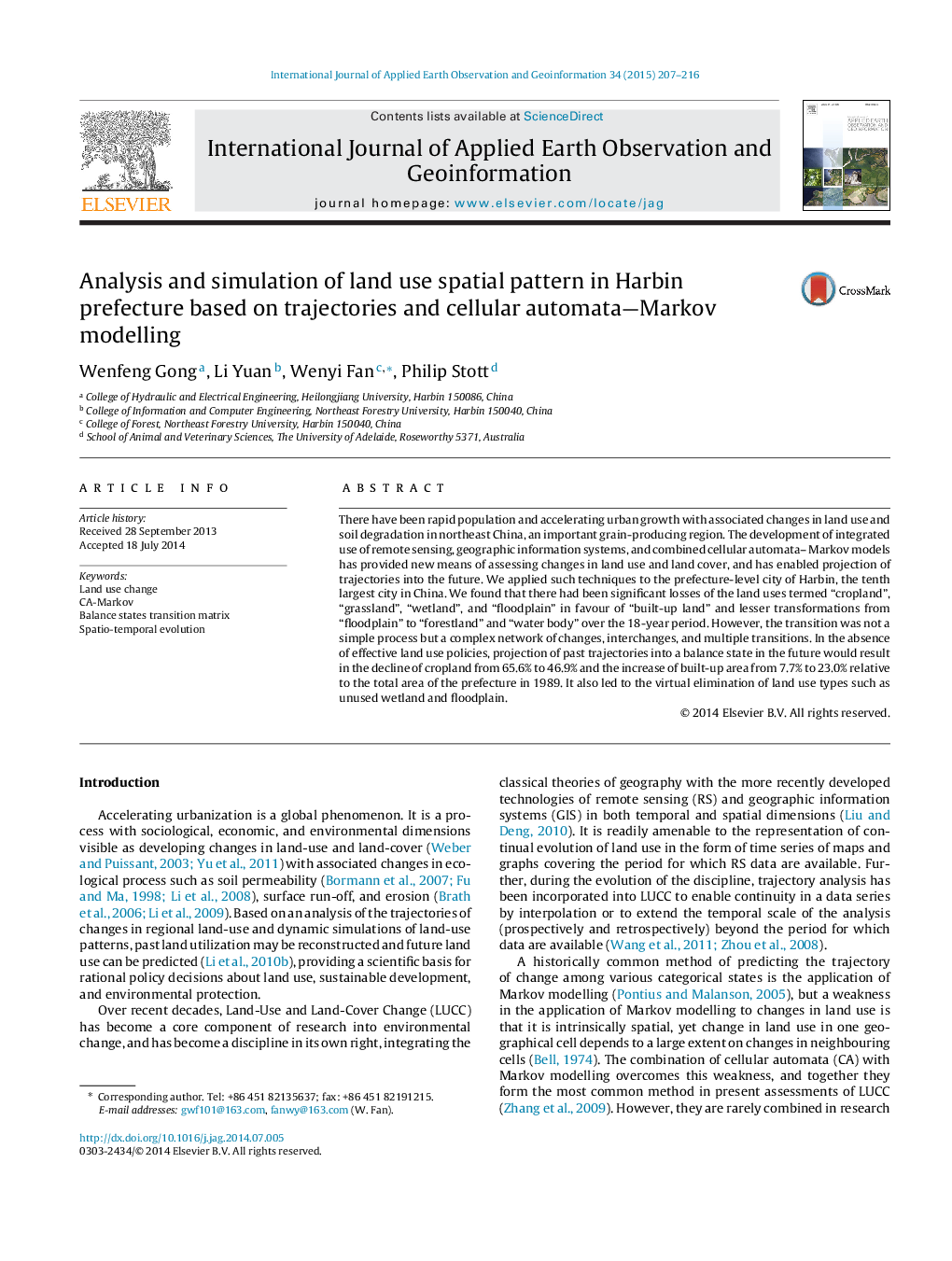| Article ID | Journal | Published Year | Pages | File Type |
|---|---|---|---|---|
| 6348751 | International Journal of Applied Earth Observation and Geoinformation | 2015 | 10 Pages |
Abstract
There have been rapid population and accelerating urban growth with associated changes in land use and soil degradation in northeast China, an important grain-producing region. The development of integrated use of remote sensing, geographic information systems, and combined cellular automata- Markov models has provided new means of assessing changes in land use and land cover, and has enabled projection of trajectories into the future. We applied such techniques to the prefecture-level city of Harbin, the tenth largest city in China. We found that there had been significant losses of the land uses termed “cropland”, “grassland”, “wetland”, and “floodplain” in favour of “built-up land” and lesser transformations from “floodplain” to “forestland” and “water body” over the 18-year period. However, the transition was not a simple process but a complex network of changes, interchanges, and multiple transitions. In the absence of effective land use policies, projection of past trajectories into a balance state in the future would result in the decline of cropland from 65.6% to 46.9% and the increase of built-up area from 7.7% to 23.0% relative to the total area of the prefecture in 1989. It also led to the virtual elimination of land use types such as unused wetland and floodplain.
Related Topics
Physical Sciences and Engineering
Earth and Planetary Sciences
Computers in Earth Sciences
Authors
Wenfeng Gong, Li Yuan, Wenyi Fan, Philip Stott,
